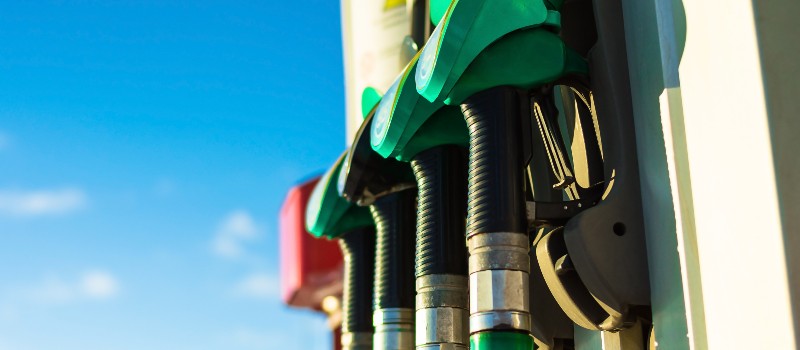
What is hypermiling? And should we all be doing it?
15th Aug, 2022
Hypermiling is a practice that’s not all that new, but unsurprisingly, we’ve all been hearing quite a bit more about it in the last year or so. It’s an umbrella term for a range of eco-friendly driving techniques, designed to save drivers fuel and ultimately money at the pumps. All sounds good so far, doesn’t it?
So, you might be wondering, why isn’t everyone doing this? Ah, well therein lies the rub. Some techniques might save you a couple of pennies (or pounds if you’re lucky), but some of them can be quite fiddly, others a bit questionable legally, and a few of them downright dangerous – more than enough for you to accidentally scrap your car.
What is hypermiling?
Hypermiling is basically the term used to refer to a variety of energy efficient driving techniques, all calculated to help you get every last drop of fuel to the gallon. The idea is that by allowing you to make your fuel go further, you’ll ultimately need less of it to run your car, so you get to save money. Hypermiling can be done with almost any vehicle, and many people swear by its ability to lower running costs. However, some hypermiling techniques are more extreme – and unsafe – than others.
Why are people doing more hypermiling now?
There are a couple of answers to that question, but to sum it up in two words: fuel prices.
Let’s cast your mind back quickly. Back in the early 2000s, it was sky-high fuel prices that prompted drivers in the United States to pioneer new eco-friendly driving practices, partially based on techniques used by professional race car drivers. These formed the basis for the practice of hypermiling. Now, fast forward to today, and record fuel prices are once again prompting more and more drivers all over the world to experiment with hypermiling techniques, including plenty of people here in the UK.
There are a lot of complex overlapping factors in the gradually rising fuel prices, so we’ll sum them up briefly.
For starters, we’re still feeling the economic effects of the Covid-19 pandemic. When the world came to a standstill in 2020, the demand for energy collapsed. Now that demand has rebounded and suppliers of crude oil have struggled to keep up, leading to skyrocketing prices. (The government attempted to soften this blow with a fuel duty cut in March 2022, but this ended up mired in controversies of its own.)
Russia’s war in Ukraine has also had a major impact. It’s one of the world’s largest oil exporters, and multiple countries have levelled sanctions at it as a result of its actions against its neighbour. The US has banned Russian oil imports, the EU is about to block most of them by the end of the year, the the UK is phasing them out. Demand from other oil producers has therefore increased, which has led to higher prices.
All this is contributing to a growing cost of living crisis, one that’s so far resulted in countless families up and down the UK being forced to make impossible choices about which essentials to spend money on each month; food, heating or fuel. With all that in mind, it’s no wonder people are more prepared than ever to experiment with hypermiling techniques.

Should we all by hypermiling?
Well, yes and no. There’s no question that the ability to save yourself money on fuel is something we’d all be grateful for right now, but as we’ve touched on above, some hypermiling techniques are more extreme (and dangerous) than others. That means if you’re thinking about trying any, you’ll need to exercise some well-honed judgement.
Sometimes the benefits and dangers are obvious, but at other times not so much. So, here’s a quick sample of the ones worth trying – and the ones to steer well clear of.
Hypermiling techniques to try:
• Anticipating the road ahead to minimise harsh braking (which affects your fuel economy)
• Ensure your tyres are correctly inflated – underinflated tyres increase friction and drag, as well as boosting your chances of a dangerous blowout
• Remove heavy items like suitcases and roof racks from your car, enabling it to travel lighter
Hypermiling techniques to avoid:
• Coasting – i.e., driving in neutral. It’s specifically advised against in the Highway Code, since it reduces control over your car. Plus, fuel is still being delivered to the engine, so it doesn’t actually benefit your fuel economy anyway
• Slipstreaming, or ‘drafting’ – i.e. driving very closely behind another car (especially a large one like an HGV) to reduce drag. It might work for NASCAR, but on public roads it’s known by another name: tailgating. And it’s illegal for a reason!
• Only filling half your engine – tempting, given the prices, but no dice. Not only do risk of running out and getting stranded, but running consistently low on fuel also poses the risk of damage to your pump and injectors, which are both very expensive to get repaired
That last one could easily be enough to write off your vehicle, which may end up with you having that dawning realisation – I need to scrap my car. Hopefully though, you’ll be able to dodge that, and maximise your car’s operational lifespan. When that fateful day comes though, rest assured we’ll always be here to help at Scrap Car Network.
Our mission is to get you the most cash for your car, and we’ve made sure that the entire process couldn’t be easier – just enter your car reg into our homepage to get a free, no obligation instant online quote. It only takes a few seconds. Curious to find out how much your car is worth?